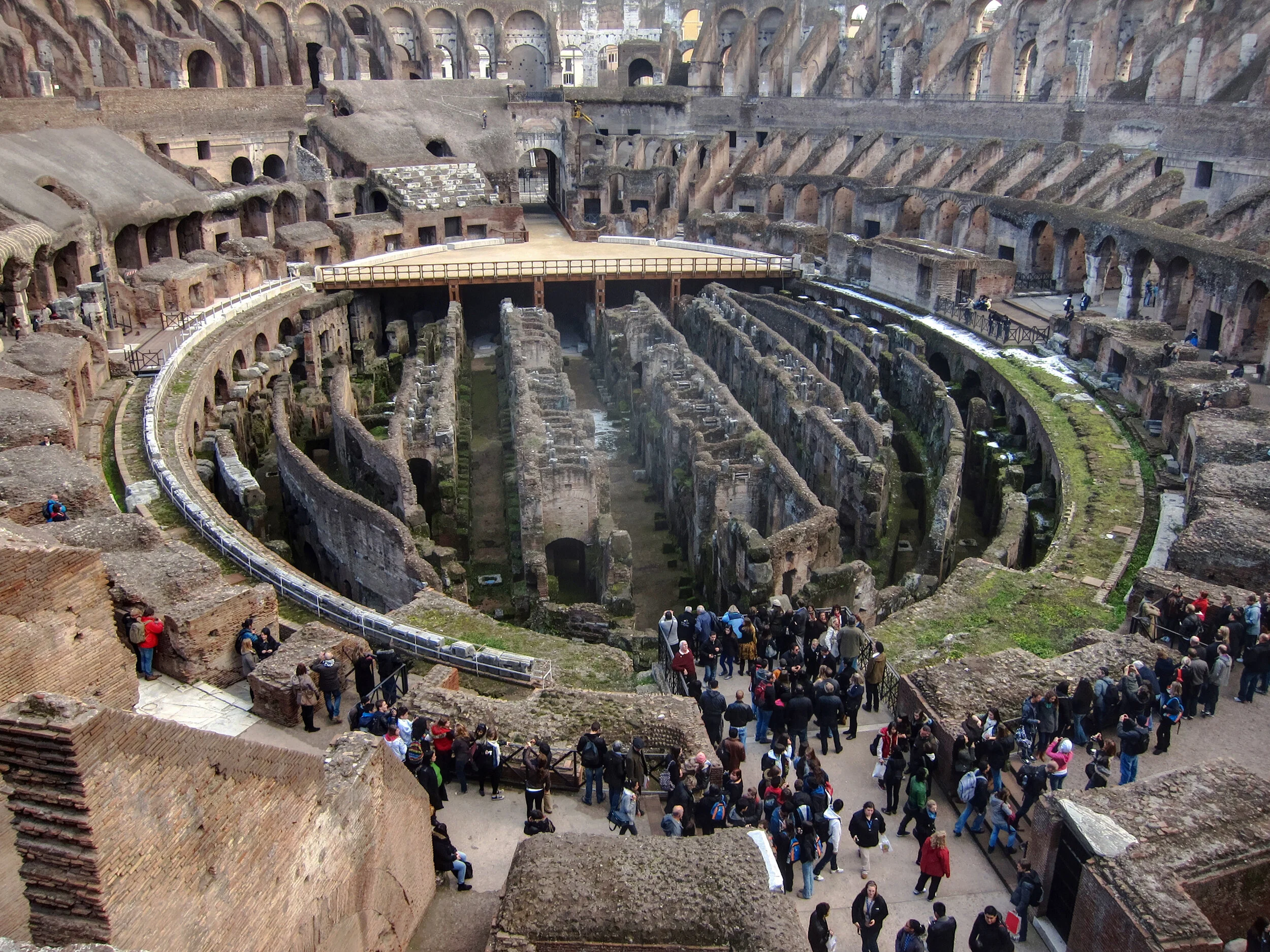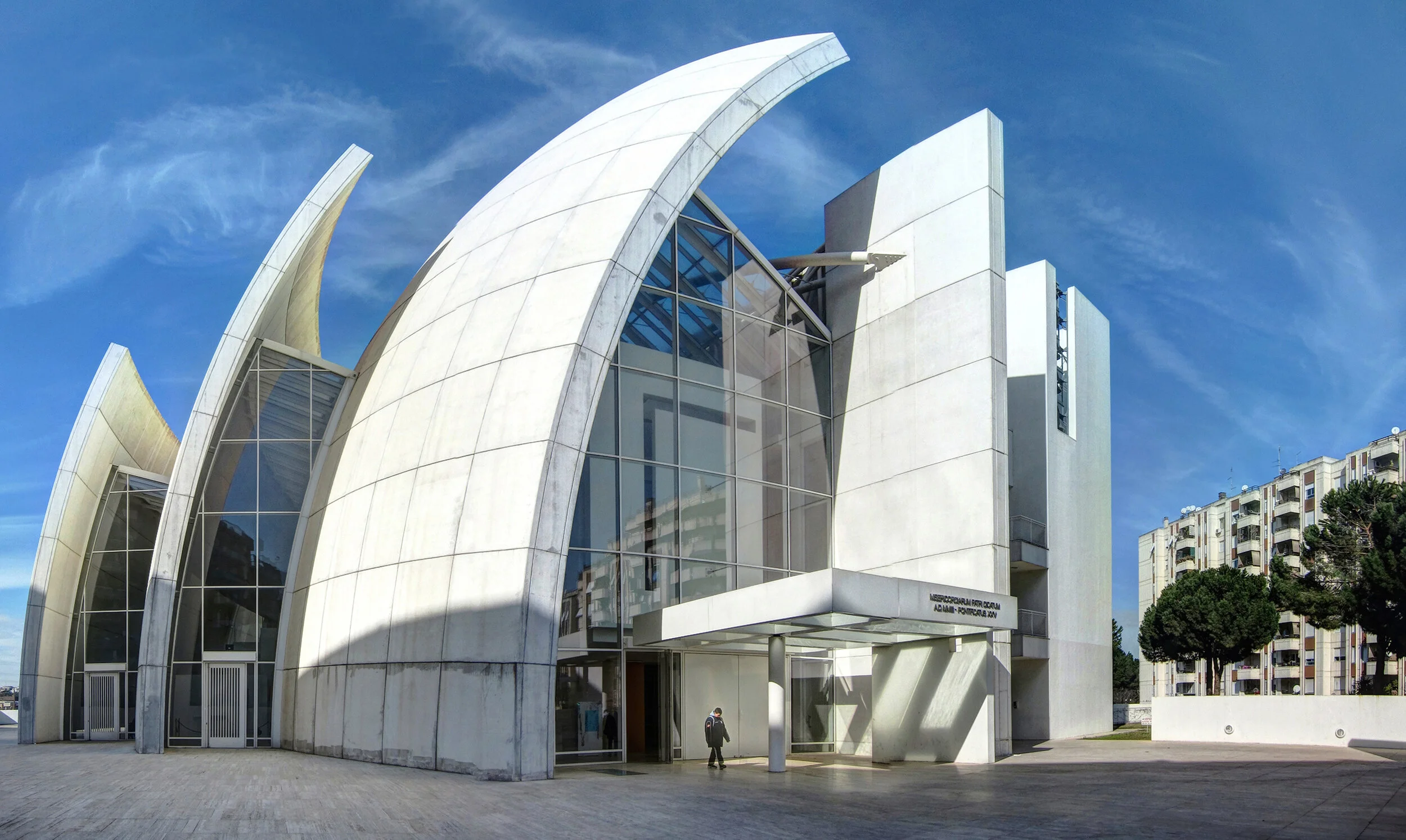
Page 1 of 3
Rome, Italy
Tiptoe through our shiny city with our diamond slippers on
What better place to start a slideshow about Rome than at the Forum, for over a thousand years (roughly 500 BC to 500 AD) it was the very center of the center of the world. This is where emperors were eulogized, where senators argued and where defeated kings were paraded and jeered at by unruly mobs during Roman triumphs. After the empire fell, it was sacked by barbarians, ravaged by time and neglect, and pieces were stolen for other local construction projects, primarily churches. What remains after all these years and decades and centuries are pieces of greatness, with just enough left to let you imagine the size and grandeur of a place where Caesars once walked and where an empire once stood.
And if the Forum was the very center of the center of the world (and it was), then these ruins are actually the very, very center of the very center of the center of the world. This is all that is left of the Temple of Vesta, the circular temple that was the home of the continuously burning fire that the Vestal Virgins spent all of their time keeping up, the fire that represented the eternity of Rome. Right off the Via Sacra (Sacred Road), it was the holy of holies in a Roman society that worshiped many gods but, let's face it, were really more about themselves than about Jupiter or Saturn. Other notable ruins visible in this image include the Curia Julia (the intact brick building on the right) which was the home of the Roman senate and a building that survived since it was turned into a church. This was where the senate met but was not where Julius Caesar was assassinated (the senate was meeting across town that day) or where Cicero's hands and head were nailed to (they weren't nailed to the senate doors but rather to the rostrum, behind the Temple of Vesta and just out of view). Also visible is the Arch of Septimus Severus (a later emperor), Palatine Hill (on the left, home of palaces) and Capitoline Hill (on the right center).
Just before I left for Rome, I found myself rewatching the second season of the wildly inaccurate but highly entertaining HBO/BBC series "Rome" on my DVR, proving once again that I really need to clean out my DVR (that show ended well over five years ago). The series covered the timeline from Julius Caesar's ascension to the defeat of Marc Antony by Octavian (later known as Augustus), a prequel of sorts to the wildly inaccurate but highly entertaining PBS/BBC series "I, Claudius" which started with Augustus (previously known as Octavian) and carried right through Tiberius, Caligula and Claudius. Between those two wildly inaccurate but highly entertaining series, I am far more familiar with that line of succession (Julius Caesar through Claudius) than any of the other, equally interesting emperors. Names of historical secondary characters like Germanicus and Livia and Octavia are instantly familiar- even if my view of them is wildly inaccurate, it is always the era of Rome that I identify with the most.
This is the extraordinarily well preserved (and relocated) Ara Pacis, the Altar of Peace, commissioned by the senate in honor of returning emperor Caesar Augustus who (in 13 BC, 2025 years ago) had just come back from Gaul (France) and was unknowingly responsible for the Pax Romana, the Roman Peace, 200 years without war in an empire that seemed to crave it. This building was also a built, visible symbol of the legitimacy of Augustus, its sides remain carved with images of himself and his inner circle including Marcus Agrippa, Livia, Tiberius, Antonia, Drusus and Germanicus, among others. The altar was located in a flood plain within sight of Augustus' mausoleum and was outside the ancient city walls. It was the flood plain that saved it in the end. All this time the river flowed (and often flooded), burying and preserving the altar under mud under Rome. It was eventually found, relocated and rebuilt under fascist dictator Benito Mussolini and its current enclosure (replacing a previous one) was designed by American architect Richard Meier. This new enclosure is not without controversy- as a modern white building in the core of a historic city, it is so hated by the local government that the mayor is on record for wanting it torn down. A shame since it's a nice enough (but not overly spectacular) building and a nice contrast with the Ara Pacis itself, the real star and the reason to come in the first place.
Built after Augustus and Tiberius and Nero and Claudius, on the site of Nero's excessive palace grounds, the Colosseum (or Flavian Amphitheatre) remains powerful evidence that the Romans knew what the hell they were doing. Around 50,000 people came here (with free tickets) to see games that would often last for a month, and by "games" of course I mean bloody, bloody deaths. Criminals were creatively executed, gladiators battled and sometimes unarmed captured kings would take their chances against exotic animals (the exotic animals always won). The area at the center of the photo shows parts of the underground passages, directly on top of them would have been a wood deck and a few inches of sand (the word "sand" is "arena" in Latin). The seating would be above that with fabric shades at the top to shield the spectators from the hot, hot Roman sun.
Over all this time the ruins remain in remarkable shape, partially because a few hundred years ago the popes put some effort in making sure that it stayed well preserved. This was not just a generous act of largesse on their part but instead because they wanted to preserve it as a holy site where christians were martyred and fed to the lions. Historically there is no evidence that happened here, although for a few hundred years it did regularly happen at other sites across the then still polytheistic empire.
The pediment at the front of the Pantheon says "M Agrippa L F Cos Teritum Fecit," which means that it was built (Fecit) by Marcus Agrippa (M Agrippa), the son of Lucius (L F) and three times Consul of Rome (Cos Teritum). If you were to somehow travel back through time 2039 years and tell Marcus Agrippa, the general who defeated Mark Antony at Actium and Brutus at Phillipi, that his Pantheon would still be standing after all of these years, not only would it be impossible to predict his reaction but (more importantly) you would be telling him a lie. Agrippa's Pantheon only stood a hundred (or so) years before burning to the ground. The Pantheon that we all know and love was actually the third one on the same site and was built during the reign of the Emperor Hadrian, the same guy who liked building walls to keep all of those dreadful Scots out of England. Hadrian was an amateur architect and probably had a hand in the actual design of the Pantheon. The possible proof of this is that when another Roman architect criticized its design, Hadrian had him killed, something that any architect would do if given the chance. As always, it's good to be emperor.
The highly influential building itself has been in continuous use since 126 AD. The Pantheon was built as a temple to all (Pan) gods (theon) and one of the few temples that allowed even the plebs inside. It was converted to a christian (now catholic) church in the 600s during the fall of the empire and remains today both a church and (far more importantly) amazing proof of what the Roman Empire was capable of.
About an hour (or so) out of Rome (with a transfer at Porto S Paolo) is the wonderfully preserved port town of Ostia, the place where Romans had to go before heading out to sea. Unlike Rome, the town was abandoned over time and the ruins left an almost intact small Roman city, kind of like Pompeii without the tragedy of Vesuvius thrown in. The most impressive part of the city that remains is its amphitheatre and the surrounding market square, where ruins of temples and black and white mosaic floors remain as they were when the empire was at its height and the still unquestioned center of civilization.
Well over a millennium and a half after the empire fell, Marcus Aurelius still rides in Michelangelo's plaza atop Capitoline Hill, under a perfect late afternoon Roman sun.

